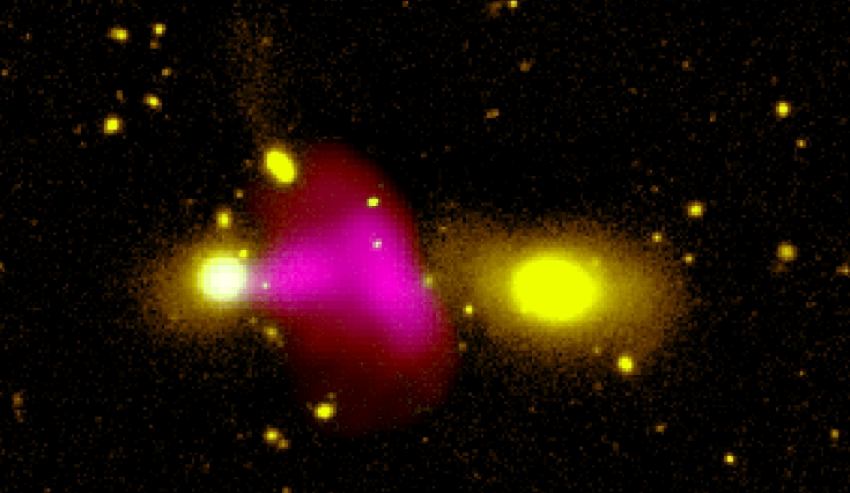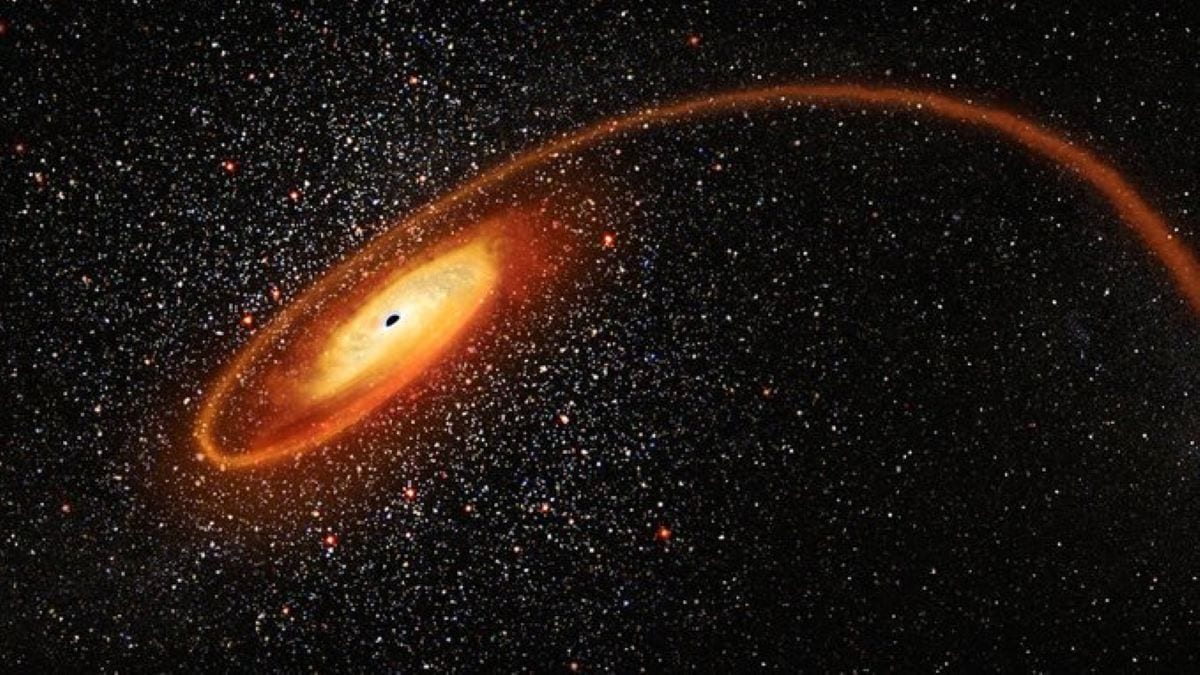Not only have scientists found the very first evidence of a black hole firing a jet at another galaxy, when scientists see jets, they see them in pairs. This black hole has only one.
Astronomers discovered a unique black hole spewing an explosive jet at another galaxy with the help of citizen scientists. A galaxy named RAD12 hosts a black hole around one billion light-years from Earth.

In terms of their morphology, galaxies can be divided into two major groups: spiral galaxies and elliptical galaxies. Cold gas and dust abound in spiral arms that appear optically blue. The formation of new stars in spiral galaxies occurs every year at an average rate of one star, like the Sun. On the other hand, Elliptical galaxies appear yellowish and lack distinctive features such as spiral arms.
A mystery in deep space
Elliptical galaxies are rare sources of star formation. The reason they have not been forming new stars for billions of years is still a mystery to astronomers. The culprit seems to be giant black holes or supermassive black holes. By spewing enormous jets, these ‘monster’ black holes deplete the fuel needed for future star formation: cold gas and dust.
Sloan Digitised Sky Survey (SDSS) optical data and Very Large Array (FIRST) radio data were used in 2013 to observe RAD12. To confirm its exotic nature, follow-up observations with the Giant Meterwave Radio Telescope in India were required. RAD12’s black hole appears to be ejecting its jet only toward RAD12-B. However, the ejection of jets occurs in pairs at relativistic speeds, traveling in opposite directions. Astronomers are puzzled as to why only one jet is observed from RAD12.

Unlike anything we have seen before
RAD12 is seen to have a conical stem of young plasma ejected from the center that extends far beyond the stars that can be seen. In the tricolor image of the GMRT, the fainter and older plasma flares out like a mushroom cap well beyond the central conical stem. The structure extends over 440 thousand light years, which is much longer than the host galaxy.
There has never been a jet observed colliding with a large galaxy like RAD12-B before. This is why RAD12 is unlike anything we have seen before. As a result of such interactions, elliptical galaxies may no longer have the cold gas necessary to form new stars in the future.
Citizen science
A rare system has been discovered that helps us better understand how radio jet feedback affects star formation in galaxies during collisions, says lead researcher Dr. Ananda Hota. There is strong evidence that RAD12’s radio jet is colliding with its companion galaxy. This is based on observations with the GMRT and data from other telescopes, such as the MeerKAT radio telescope.

The RAD@home Citizen Science collaborative is another aspect of this research that illustrates public participation in research. The study detailing the find was published in Monthly Notices of the Royal Astronomical Society (Letters).